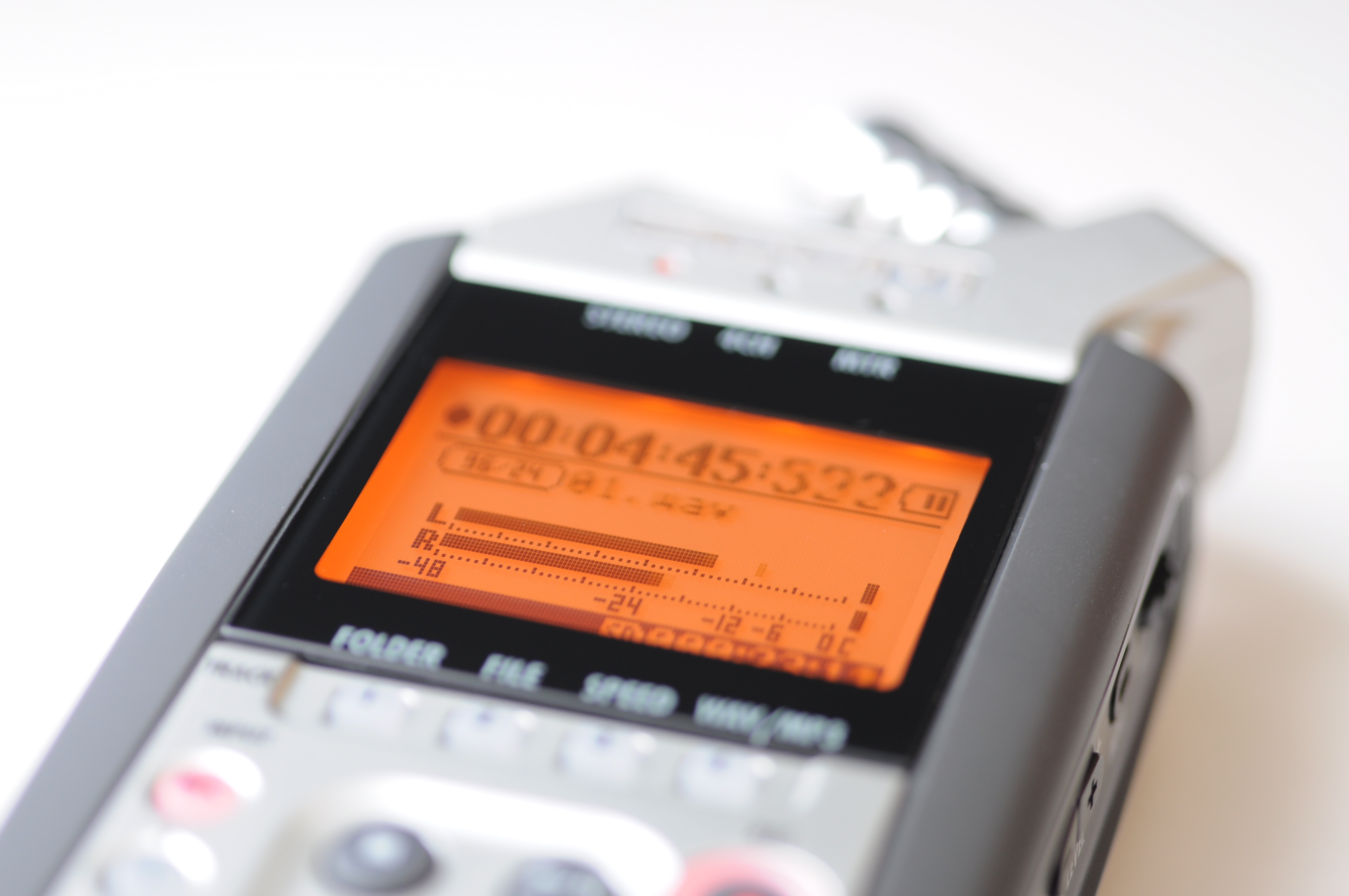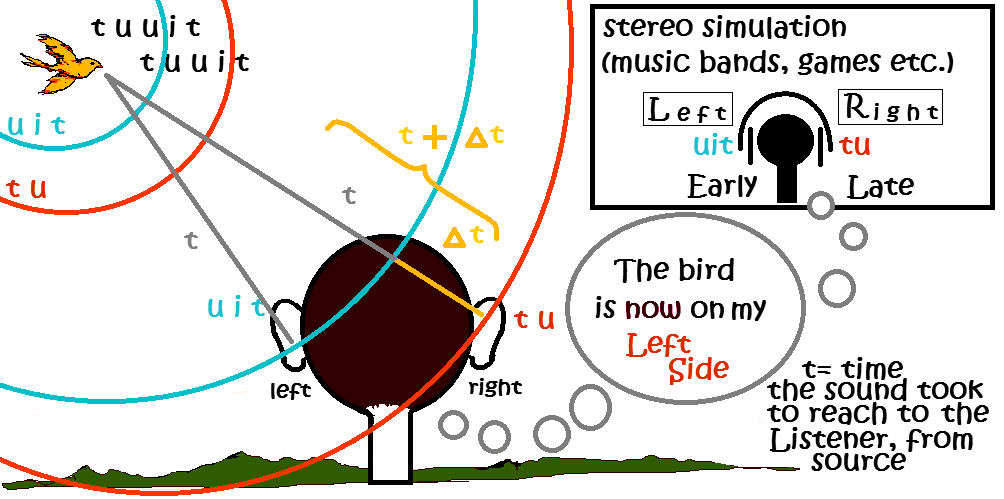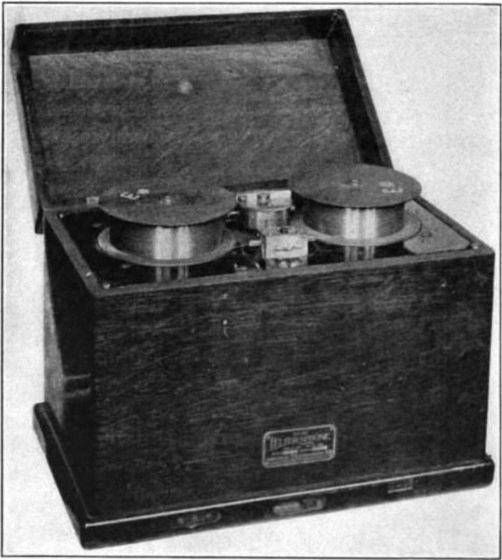|
Mastered
Mastering is a form of audio post production which is the process of preparing and transferring recorded audio from a source containing the final mix to a data storage device called a master recording, the source from which all copies will be produced (via methods such as pressing, duplication or replication). In recent years, digital masters have become usual, although analog masters—such as audio tapes—are still being used by the manufacturing industry, particularly by a few engineers who specialize in analog mastering. Mastering requires critical listening; however, software tools exist to facilitate the process. Results depend upon the intent of the engineer, their skills, the accuracy of the speaker monitors, and the listening environment. Mastering engineers often apply equalization and dynamic range compression in order to optimize sound translation on all playback systems. It is standard practice to make a copy of a master recording—known as a safety copy—in c ... [...More Info...] [...Related Items...] OR: [Wikipedia] [Google] [Baidu] |
Digital Recording
In digital recording, an audio signal, audio or video signal is converted into a stream of discrete numbers representing the changes over time in air pressure for audio, or Color, chroma and luminance values for video. This number stream is saved to a storage device. To play back a digital recording, the numbers are retrieved and converted back into their original analog signal, analog audio or video forms so that they can be heard or seen. In a properly matched analog-to-digital converter (ADC) and digital-to-analog converter (DAC) pair, the analog signal is accurately reconstructed, within the constraints of the Nyquist–Shannon sampling theorem, which dictates the sampling rate and quantization error dependent on the Audio bit depth, audio or Bit depth (computer graphics), video bit depth. Because the signal is stored digitally, assuming proper error detection and correction, the recording is not degraded by copying, storage or interference. Timeline *October 3, 1938: ... [...More Info...] [...Related Items...] OR: [Wikipedia] [Google] [Baidu] |
Monaural
Monaural sound or monophonic sound (often shortened to mono) is sound intended to be heard as if it were emanating from one position. This contrasts with stereophonic sound or ''stereo'', which uses two separate audio channels to reproduce sound from two microphones on the right and left side, which is reproduced with two separate loudspeakers to give a sense of the direction of sound sources. In mono, only one loudspeaker is necessary, but, when played through multiple loudspeakers or headphones, identical audio signals are fed to each speaker, resulting in the perception of one-channel sound "imaging" in one sonic space between the speakers (provided that the speakers are set up in a proper symmetrical critical-listening placement). Monaural recordings, like stereo ones, typically use multiple microphones fed into multiple channels on a recording console, but each channel is " panned" to the center. In the final stage, the various center-panned signal paths are usually mix ... [...More Info...] [...Related Items...] OR: [Wikipedia] [Google] [Baidu] |
Multi-track Recording
Multitrack recording (MTR), also known as multitracking, is a method of sound recording developed in 1955 that allows for the separate recording of multiple sound sources or of sound sources recorded at different times to create a cohesive whole. Multitracking became possible in the mid-1950s when the idea of simultaneously recording different audio channels to separate discrete ''tracks'' on the same reel-to-reel tape was developed. A ''track'' was simply a different channel recorded to its own discrete area on the tape whereby their relative sequence of recorded events would be preserved, and playback would be simultaneous or synchronized. A multitrack recorder allows one or more sound sources to different tracks to be simultaneously recorded, which may subsequently be processed and mixed separately. Take, for example, a band with vocals, guitars, a keyboard, bass, and drums that are to be recorded. The singer's microphone, the output of the guitars and keys, and each indivi ... [...More Info...] [...Related Items...] OR: [Wikipedia] [Google] [Baidu] |
Stereo
Stereophonic sound, commonly shortened to stereo, is a method of sound reproduction that recreates a multi-directional, 3-dimensional audible perspective. This is usually achieved by using two independent audio channels through a configuration of two loudspeakers (or stereo headphones) in such a way as to create the impression of sound heard from various directions, as in natural hearing. Because the multi-dimensional perspective is the crucial aspect, the term ''stereophonic'' also applies to systems with more than two channels or speakers such as quadraphonic and surround sound. Binaural sound systems are also ''stereophonic''. Stereo sound has been in common use since the 1970s in entertainment media such as broadcast radio, recorded music, television, video cameras, cinema, computer audio, and the Internet. Etymology The word ''stereophonic'' derives from the Greek (''stereós'', "firm, solid") + (''phōnḗ'', "sound, tone, voice") and it was coined in 1927 by ... [...More Info...] [...Related Items...] OR: [Wikipedia] [Google] [Baidu] |
Dynamic Range Compression
Dynamic range compression (DRC) or simply compression is an audio signal processing operation that reduces the volume of loud sounds or amplifies quiet sounds, thus reducing or ''compressing'' an audio signal's dynamic range. Compression is commonly used in sound recording and reproduction, broadcasting, sound reinforcement system, live sound reinforcement and some instrument amplifiers. A dedicated electronic hardware unit or audio software that applies compression is called a compressor. In the 2000s, compressors became available as software plugins that run in digital audio workstation software. In recorded and live music, compression parameters may be adjusted to change the way they affect sounds. Compression and limiting are identical in process but different in degree and perceived effect. A limiter is a compressor with a high #Ratio, ratio and, generally, a short #Attack and release, attack time. Compression is used to improve performance and clarity in public address ... [...More Info...] [...Related Items...] OR: [Wikipedia] [Google] [Baidu] |
Direct To Disc Recording
Direct-to-disc recording refers to sound recording methods that bypass the use of magnetic tape recording and record audio directly onto analog disc masters. Professional analog sound recording Most sound recordings for gramophone records, records before the 1950s were made by cutting directly to a master disc. Recording via magnetic tape became the industry standard around the time of the creation of the LP album, LP format in 1948, and these two technological advances are often seen as being joined, although 78 rpm records cut from tape masters continued to be manufactured for another decade. The first commercial release of Direct-to-disc microgroove LP records was from the Nippon Columbia label, in 1969 - the series entitled "Columbia 45rpm Direct Cutting Series". And in the mid-late 1970s, a small number of albums recorded direct-to-disc began to appear again on the market and were marketed as "audiophile" editions, promising superior sound quality compared with recordings ma ... [...More Info...] [...Related Items...] OR: [Wikipedia] [Google] [Baidu] |
Magnetic Wire Recording
Wire recording, also known as magnetic wire recording, was the first magnetic recording technology, an analog type of audio storage. It recorded sound signals on a thin steel wire using varying levels of magnetization. The first crude magnetic recorder was invented in 1898 by Valdemar Poulsen. The first magnetic recorder to be made commercially available anywhere was the Telegraphone, manufactured by the American Telegraphone Company, Springfield, Massachusetts in 1903. The wire is pulled rapidly across a recording head which magnetizes each point along the wire in accordance with the intensity and polarity of the electrical audio signal being supplied to the recording head at that instant. By later drawing the wire across the same or a similar head while the head is not being supplied with an electrical signal, the varying magnetic field presented by the passing wire induces a similarly varying electric current in the head, recreating the original signal at a reduced leve ... [...More Info...] [...Related Items...] OR: [Wikipedia] [Google] [Baidu] |
Hard Disk Drive
A hard disk drive (HDD), hard disk, hard drive, or fixed disk is an electro-mechanical data storage device that stores and retrieves digital data using magnetic storage with one or more rigid rapidly rotating hard disk drive platter, platters coated with magnetic material. The platters are paired with disk read-and-write head, magnetic heads, usually arranged on a moving actuator arm, which read and write data to the platter surfaces. Data is accessed in a random-access manner, meaning that individual Block (data storage), blocks of data can be stored and retrieved in any order. HDDs are a type of non-volatile storage, retaining stored data when powered off. Modern HDDs are typically in the form of a small disk enclosure, rectangular box. Hard disk drives were introduced by IBM in 1956, and were the dominant secondary storage device for History of general-purpose CPUs, general-purpose computers beginning in the early 1960s. HDDs maintained this position into the modern er ... [...More Info...] [...Related Items...] OR: [Wikipedia] [Google] [Baidu] |
Abbey Road Studios
Abbey Road Studios (formerly EMI Recording Studios) is a music recording studio at 3 Abbey Road, London, Abbey Road, St John's Wood, City of Westminster, London. It was established in November 1931 by the Gramophone Company, a predecessor of British music company EMI, which owned it until Universal Music Group (UMG) took control of part of it in 2013. It is ultimately owned by UMG subsidiary Virgin Records Limited. The studio's most notable client was the Beatles, who used the studio – particularly its Studio Two room – as the venue for many of the Recording practices of the Beatles, innovative recording techniques that they adopted throughout the 1960s. In 1976, the studio was renamed from ''EMI'' to ''Abbey Road''. In 2009, Abbey Road came under threat of sale to property developers. In response, the British Government protected the site, granting it English Heritage Listed building, Grade II listed status in 2010, thereby preserving the building from any major alterati ... [...More Info...] [...Related Items...] OR: [Wikipedia] [Google] [Baidu] |
Compact Disc
The compact disc (CD) is a Digital media, digital optical disc data storage format co-developed by Philips and Sony to store and play digital audio recordings. It employs the Compact Disc Digital Audio (CD-DA) standard and was capable of holding of uncompressed stereo audio. First released in Japan in October 1982, the CD was the second optical disc format to reach the market, following the larger LaserDisc (LD). In later years, the technology was adapted for computer data storage as CD-ROM and subsequently expanded into various writable and multimedia formats. , over 200 billion CDs (including audio CDs, CD-ROMs, and CD-Rs) had been sold worldwide. Standard CDs have a diameter of and typically hold up to 74 minutes of audio or approximately of data. This was later regularly extended to 80 minutes or by reducing the spacing between data tracks, with some discs unofficially reaching up to 99 minutes or which falls outside established specifications. Smaller variants, such ... [...More Info...] [...Related Items...] OR: [Wikipedia] [Google] [Baidu] |







